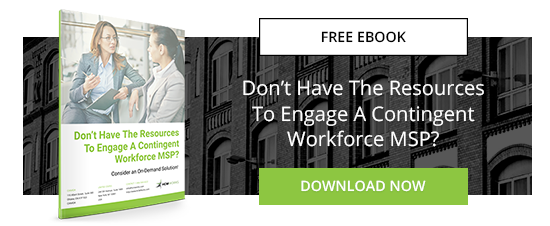Over the past few years, there has been a surge in the use of contingent labour in the business world—and the number of organizations using this type of labour is set to increase dramatically in the near future.
In an uncertain economy, a contingent workforce allows for greater flexibility and increased costs. This surge has changed the nature and impact of contingent work. These workers are no longer utilized only in low-level positions and on a short-term basis. Many business owners are now hiring specialized contingent workers with much-needed skills as key members of their organizations. Thus, managing them efficiently has become more important to companies’ overall business goals than ever before.
Though clearly important to business, the contingent workforce comes with unique challenges, such as management. Contingent workers cannot be managed in the same way as full-time, permanent employees. They are paid differently, come with different risks, operate under separate employment rules, and receive different benefits. Therefore, different management tools must be used.
Adequate Technology Is a Necessity
Effective continent labour management requires the use of technology to track, monitor, manage, and pay the contingent workforce. Digital tools can maximize productivity, decrease compliance risks, and streamline operations. Many human resources software programs offer basic tools for meeting compliance requirements, payment, and tracking, but with a growing number of contingent workers in the field, companies are looking for more sophisticated and detailed management options. They need adequate technology that effectively meets their management needs.
All-in-One Vendor Management Systems
Thus, many companies turn to vendor management systems. This type of contingent labour management system is automated and allows you to easily and effortlessly track suppliers, contract labour, and temps. Most programs are cloud-based and offer tools to track deliverables and hours worked, analyze and measure performance, and forecast future needs and potential issues.
Vendor management software allows organizations to decrease their labour costs, increase efficiencies, and better align their contingent workers with projects. Using technology for contingent labour management drives visibility in all areas, enhances analytics and reporting, and provides an automated hub for managing all of the day-to-day operations.
The Piecemeal Approach
However, some companies choose to take a piecemeal approach to contingent labour management. They use different types of technology and diverse tools to handle the interrelated but separate areas of contingent labour management. For example, they use one software system to administer payroll, one for sourcing and recruiting, another for government and industry compliance, another for online training, and yet another to track attendance and hours.
Though using separate technologies is still by far more effective than being completely manual in your approach, oftentimes, it isn’t as productive as using all-in-one contingent labour management software. If all of these different technologies aren’t tied together effectively, the lack of integration could lead to the duplication of work, increased errors, miscommunications, and other costly issues.
It’s important for the data that is captured across the different tools to be easily shared, incorporated, and transferred among the different technologies if this piecemeal approach is going to work without adding new challenges to the process.
Integration Is Key to Using Technology to Improve Contingent Labour Management
Whether you’re using a vendor management system or multiple different stand-alone programs, integration is vital to the proper management of contingent labour. Without proper integration, it’s more time consuming and difficult to ensure that you are protected from compliance violations, that employees are paid correctly and promptly, and that all relevant data is in one place in order to track and measure performance and cost metrics.
Only when data is integrated can you start to see patterns and trends that can improve productivity, forecast risks and opportunities, and allow you to create benchmarks. The intelligence gleaned from using fully integrated technologies in contingent labour management can help your organization plan, budget, and forecast for the future in order to improve overall efficiencies.



